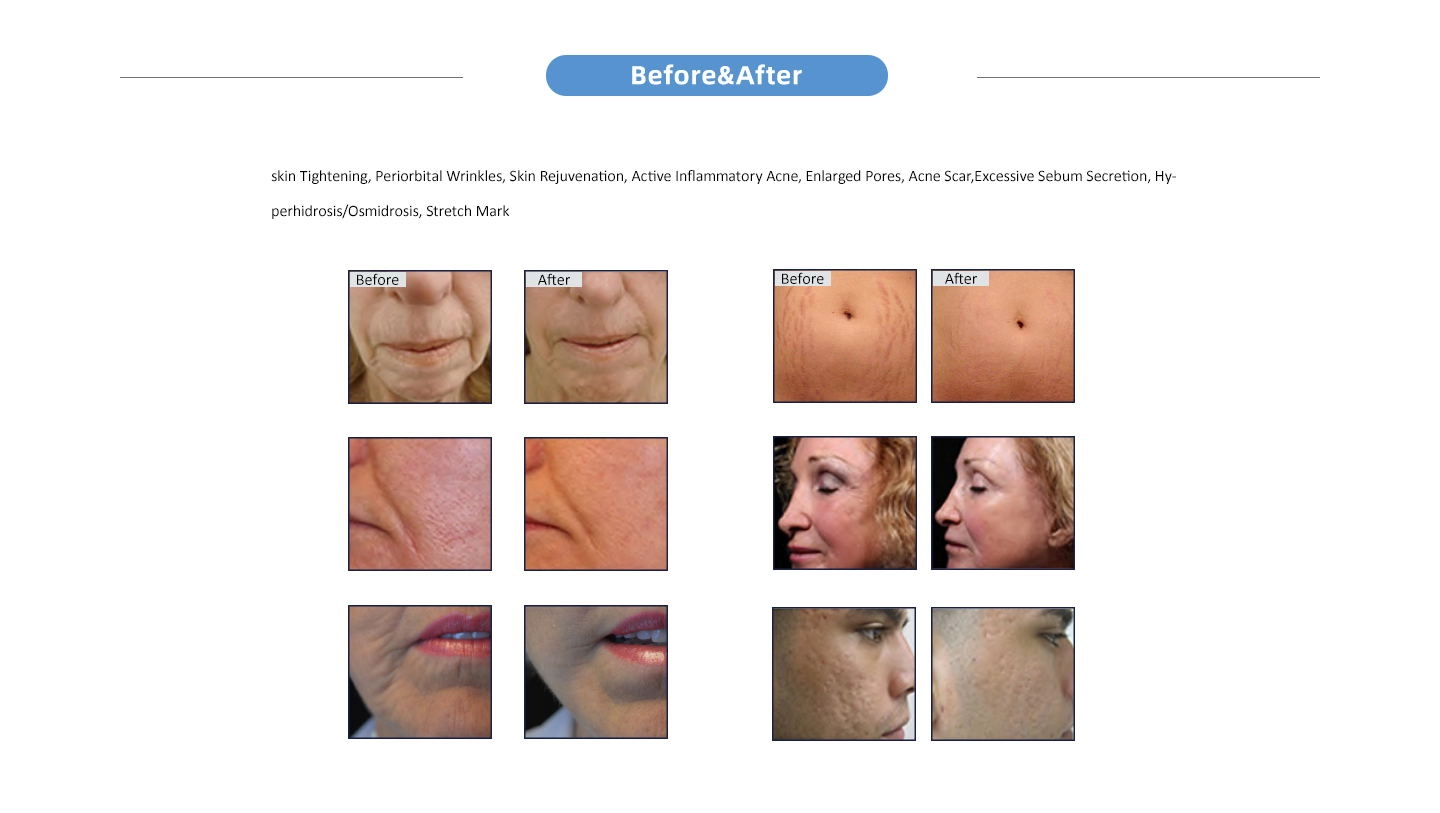Radiofrequency (RF) microneedling has grown into a strong beauty treatment. It offers skin renewal and firming. This happens by boosting collagen growth through managed heat damage. As more people want treatments for many body parts—from gentle face shapes to big areas like the belly or legs—clinics need to buy an RF needling machine that can switch easily between different spots. Picking the right tool means knowing how certain tech details turn into good results, ease, and safety over various body zones.

What Is RF Microneedling and How Does It Work Across Different Areas?
RF microneedling mixes tiny needles and radiofrequency power. It makes small wounds in the skin. At the same time, it sends heat into the deeper skin layers. This double action speeds up healing. It pushes skin cells to work and rebuild collagen. On the face, it aids with small wrinkles, acne marks, and big pores. On the body, RF needling can lessen stretch marks, loose skin, and thin, wrinkled skin. A good RF needling machine must give options in depth and power control. This way, it fits thin face skin and thicker body skin well.
Key Technical Parameters That Affect Multi-Area Performance
Needle Depth and Cartridge Range
The span of needle depths is key for handling different body parts. Short entry (0.5–1.5 mm) works best for eye areas and forehead where skin is thin. Deeper entry (2.5–4.0 mm) is needed for the belly or legs where skin layers are thicker. A solid RF needling machine should let you change needle depths. It can use swap-out parts or computer controls. This keeps changes safe and custom.
RF Power and Energy Delivery Mode
You need to manage RF energy in terms of strength (in watts) and type (monopolar vs bipolar). This affects how well it works. More strength helps reach deep layers on the body. Less, split output fits delicate face spots. Tools with strong hand pieces give better entry and quicker outcomes. 3000W ultra-strong machine power combined with high-power hand tools, powerful energy.
Cooling, Comfort, and Contact Technology
Ease is vital when moving between tender and tougher spots. Skin touch areas should have cooling like sapphire ends or heat-controlled grips. The inside of the handle is equipped with a special temperature sensing system. It is controlled by software. It uses the strong cooling system of the machine. So the handle temperature can drop to -30°C at least. The skin contact surface is made of sapphire material. It has great cold transfer. The RF microneedling treatment feels good and has no pain at all. These features matter a lot for soft spots like under eyes or neck.
Treatment Speed and Coverage
Speed counts when covering big areas like the back or legs. Tools with fast pulse rates or glide modes can cut time a lot. 10Hz (20hz) sliding therapy, high energy and short pulse width output mode, which greatly shortens the treatment time. These help busy clinics see more patients.
Popular RF Needling Machines with Multi-Area Compatibility
Device A – Modular Needle Depth System
This tool has swap-in needle parts. Practitioners pick from 10 set depth levels from 0.5 mm to 4 mm. It is made for tiny changes. It lets safe shifts between face and body work without reset.
Device B – High-Power Fractional RF Platform
It runs on a 3000W energy base. This RF needling machine has hand pieces made for small spots and big body areas. Its smart split RF mode gives aimed energy. It cuts recovery time. Ordinary machine hair removal cycle is 6-8 times, this machine only needs 3-5 times. While originally designed for diode laser hair removal, the power specifications reflect its capability for aggressive dermal remodeling.
Device C – Intelligent Feedback RF Needling System
It has live skin resistance checks and smart heat sensors. This setup keeps energy even for all skin kinds and body parts. Programs change settings from skin signals. They keep the best heat and ease levels.
Comparing RF Needling Devices for Different Treatment Areas
When checking tools for many-area work, look at how well they fit each zone:
Facial Treatment: Needs exact needle control (0.5–1.5 mm). It wants little heat harm. It needs top ease like sapphire cooling. Neck and Décolleté: Calls for mid needle depth (1.5–2.5 mm). It needs steady RF output. It wants heat control for safety. Abdomen/Thighs/Buttocks: Requires deep entry (>3 mm). It needs high power (>2500W). It wants quick rates (≥10Hz). It needs big tip coverage.
Setups like Device B stand out in power and speed for big zones. Device C gives live change tech. It suits mixed-area visits.
Who Are Ideal Candidates for Multi-Area RF Needling?
People wanting non-cut fixes for loose skin, rough texture, small lines, or marks over many spots fit RF microneedling well. Good fits include:
Adults 25–65 with first aging signs Women after birth aiming at stretch marks or belly sag People seeking mark fix on face and body Patients wanting full skin firming with little stop time
Avoid if there are active infections, pregnancy, or metal parts near treat zones.
Choosing the Right Provider and Aftercare Protocol
A trained expert like Nubway should do a full check. They set needle depths, energy, and session count by body spot. Certs from trusted groups ensure safe clinic work and quality. Passed ISO13485 system certification, TUV medical CE certification and US FDA certification.
After-care changes by spot. It usually means no sun, keep skin moist, and skip hard exercise for 48 hours at least. Experts should give custom services after plans by treated spots. This helps healing and results.

Picking a good RF needling machine for many-area work means mixing tech options with exact clinic skill. Main traits like changeable needle depth, strong RF power, advanced cooling, and quick treat ability set how the machine works on face and body uses. As beauty needs change, buying a tool with parts swap and smart fit ensures experts give steady results from forehead to thigh—safely, fast, and with ease.
FAQ
Q: Can a single rf needling machine handle pediatric patients across facial and body zones?
A: Most rf needling machines are made for adult skin. Kid use needs special low-power plans and kid-size tips. These are seldom normal. Always check maker kid approval first.
Q: How does skin phototype influence rf needling machine settings for body treatments?
A: Higher Fitzpatrick types (IV–VI) need lower start energy. They want slow increases on the rf needling machine. This stops dark spots after swelling. This is key on sun-hit body parts like arms or chest.
Q: Is vacuum-assisted needle insertion available on any rf needling machine for uneven body contours?
A: Some top rf needling machines add vacuum pull in the hand piece. It holds bumpy surfaces steady (like knees, elbows). It gives even needle entry. It cuts user tiredness.





